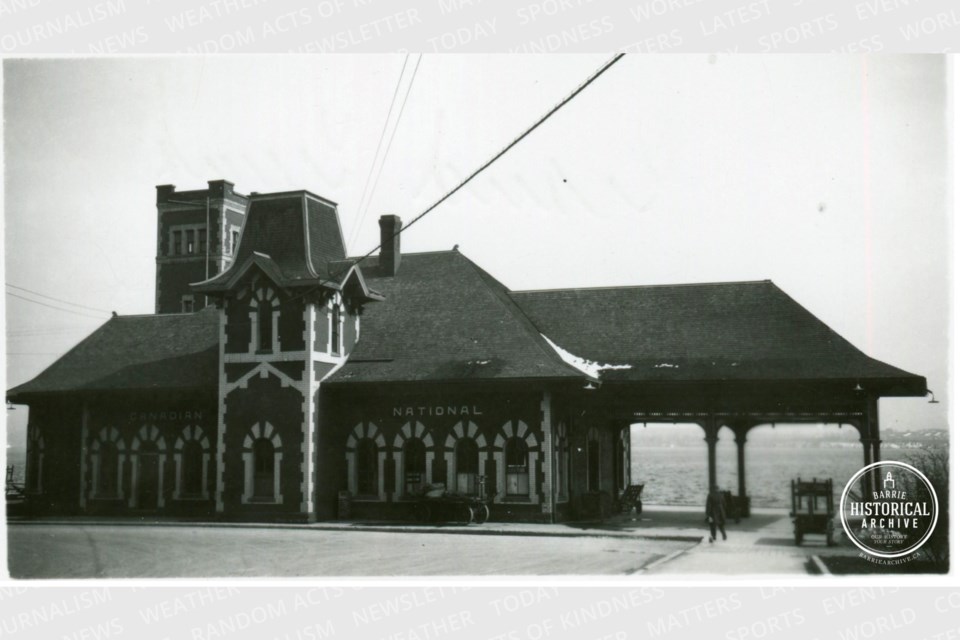Each week, the Barrie Historical Archive provides BarrieToday readers with a glimpse of the city’s past. This unique column features photos and stories from years gone by and is sure to appeal to the historian in each of us. To read Part 1, click here.
The Waisberg debacle seemed rather familiar to the townsfolk as it was only a decade earlier that merchant Danford Roche had left Barrie after similar dramatics. Perhaps the small community looked like an easy mark for out-of-town businessmen with big dreams.
The Waisberg fraud case was examined by a Grand Jury in October 1915 and found to be solid enough to go to trial in December of that year. The case was a complicated one which included a great deal of complex financial information, numerous names and dates, and a parade of Waisberg’s creditors and other witnesses.
Over two days, the jury heard all about David Waisberg’s actions both before and after the fire that destroyed the Queen’s Hotel and Waisberg’s shop therein. At issue was a meeting in March 1915 between David Waisberg and his creditors where the merchant assured the lenders that he was good for the loans. He asked for more time to dispose of the damaged goods in order to repay what he owed them.
Extensions were granted in March, April and May but the group of Toronto-based creditors began to become uneasy after hearing rumours of stock being moved in and out of Waisberg’s Barrie shop in a suspicious manner.
Dorothy Desjardins, a salesperson at the Waisberg store, had the task of sorting the fire damaged goods after they were brought to the new store on Elizabeth Street. She testified that odd things happened during the weekends. On arriving for work on Monday mornings, the store was often partially rearranged and new stock had appeared while other items seemed absent.
Judge Vance was well aware that this trial had been one of the more involved trials ever to land in his courtroom. He gave to the jury, made up of 12 farmers from outlying townships, clear instructions on how to come to a verdict.
Four hours after retiring, the jury returned. Judge Vance’s displeased face gave away the verdict before it was read. Not guilty.
Judge Vance thanked the jury and then proceeded to remind David Waisberg that he had been rather lucky that day. Perhaps, in the future, he might consider dealing more honestly with his creditors.
David Waisberg relocated to Toronto in 1919, but that didn’t prevent him from trying to pull another fast one in this town, or so it was alleged.
In 1922, C.R. Kendall, an assistant customs inspector at the Barrie train station, accused David Waisberg of attempting to bribe him. He reported that Mr. Waisberg had been importing silk and had his deliveries routed through the town of Barrie. If Kendall could neglect to tax some of these goods, Waisberg would pay him several thousand dollars each year.
Kendall arrested Waisberg on charges of bribery and smuggling but his superior decided that this was too harsh a move and dropped the charges. Waisberg was allowed to keep his silk if he agreed to pay double the duty which amounted to $818.
However, more had happened behind the scenes. Waisberg had once again called upon his previous attorney, W.A. Boys, who was also Barrie’s local MP Mr. Boys wrote to the Minister of Customs and had him instruct the local customs collector to call off prosecution.
None of this would have come to light if only Waisberg had paid the double duty as agreed. In 1924, Mr. Boys was informed that his client had never paid the $818 and that legal proceedings against Waisberg were pending.
All of this played out in the pages of the local newspapers. Waisberg was a minor player in the drama that followed as it was Mr. Boys who was cast as the villain this time. He was painted as someone who would easily use his political influence to make personal or professional gains for himself.
Nevertheless, W.A. Boys continued his political career and retired undefeated in 1930 after some 18 years in office.
It’s hard to say if all of these courtroom dramas and legal wranglings had any influence on the Waisberg children. Two of Waisberg’s sons later became attorneys. One of them rose to become a judge with his daughter following in his footsteps.



